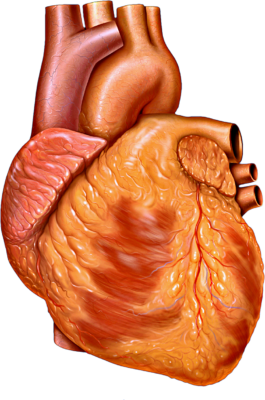Put your hand on the upper left side of your chest, do you feel a thump? That’s your heart beating in your chest. The heart is one of the most important organs in your body. It is a hollow muscle, but what makes it unique and important is what it actually does. The heart is responsible for producing and supplying blood to your entire body. This is made possible by the chambers and valves in the heart. Let’s move forward to enjoy some more heart facts for kids.
There are four chambers in the heart; two atria (upper chambers) and two ventricles (lower chambers). The atria are responsible for supplying blood to the lungs and back to the heart. While the ventricles have the tough job of supplying blood to the rest of the body; your legs, feet, arms and even the brain. Valves are responsible for transmitting blood out of the chambers and ensuring there is no backflow. The blood is then carried to the entire body using the circulation system.
The circulation system consists of veins, arteries and capillaries. Arteries carry oxygen rich blood away from your heart to the extremities of your body. Veins carry oxygen depleted blood back to your heart. Capillaries are very small veins or arteries. They are small enough that the oxygen can diffuse across the capillary wall into the tissue, and the carbon dioxide can diffuse from the tissue back into the blood. Capillaries are the structure where this gas exchange takes place.
However, that’s not all there is to the heart. Want to learn more about it? Read these Human Heart Facts For Kids
Interesting Heart Facts For Kids
Want to know the size of your heart? Close your hand and make a fist. If you are a kid, your heart is the size of one fist; however, an adult’s heart is the size of two fists.
If you could stretch out your arteries, veins and capillaries, they would be over 60,000 miles long.
How much blood can your heart really make? An adult heart typically pumps around 5 quarts of blood each minute. That’s around 2,000 gallons of blood each day. In a lifetime, an average person makes around 1 million barrels of blood.
Take a tennis ball and squeeze it. It’s hard, right? Your heart pumping is just like that. It’s a good thing that you have a strong heart!
Most people think their heart is on the left side of their chest. However, the heart is actually located in the center of the chest in between the lungs. The tip of the heart is closer to the left, that’s why you feel it beating on your left.
A woman’s heart typically beats faster than a man’s. An average man’s heart beats about 70 times a minute, and an average woman’s heart beats around 78 times per minute.
Women also might have smaller hearts than men. An average adult woman’s heart weighs around 8 ounces, while a man’s about 10 ounces.
 How many times does your heart beat? The average heart beats 100,000 times each day. In a 70 year time frame, that’s over 2.5 million beats!
How many times does your heart beat? The average heart beats 100,000 times each day. In a 70 year time frame, that’s over 2.5 million beats!
The words Atrium and ventricle have Latin origins. They mean “Entrance hall” and “Little belly” respectively.
Your blood is made up of 78 percent of water.
Typically blood takes about 20 seconds to circulate through your entire vascular system.
The heart sound, thump-thump, you hear? It is produced by the closing of the four atrioventricular valves.
According to the early Egyptians, the heart and other such major organs had a mind of their own and could move throughout the body as they please.
Where does all the blood go? 5% of blood supplies the heart, 15-20% goes to the brain and central nervous system, and 22% goes to the kidneys.
Learn more: Brain Facts
The heart has its own electrical impulses which help it to beat. Interestingly, this also enables the heart beat on its own, even if it is detached from the body—if the right amount of oxygen is provided. This is what makes heart transplant possible.
The first successful heart transplant was performed by Christiaan Barnard in Cape Town, Africa in 1967.
It is very important that you keep yourself and your heart healthy. Research shows that around 2700 people die of heart disease. So, remember to eat healthy and exercise for at least 30 minutes every day!


Leave a Reply